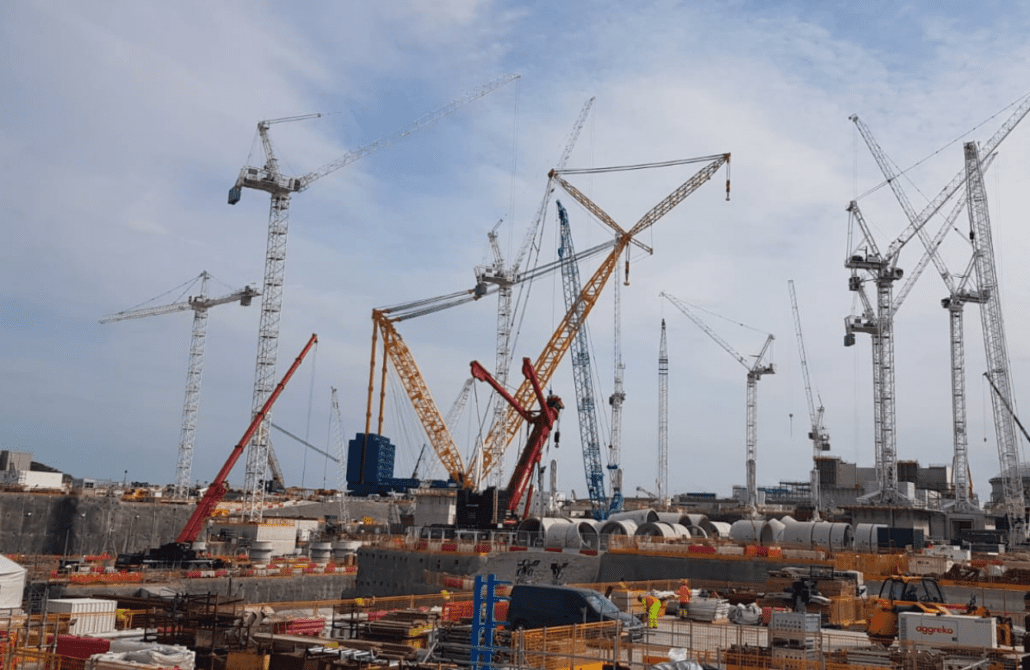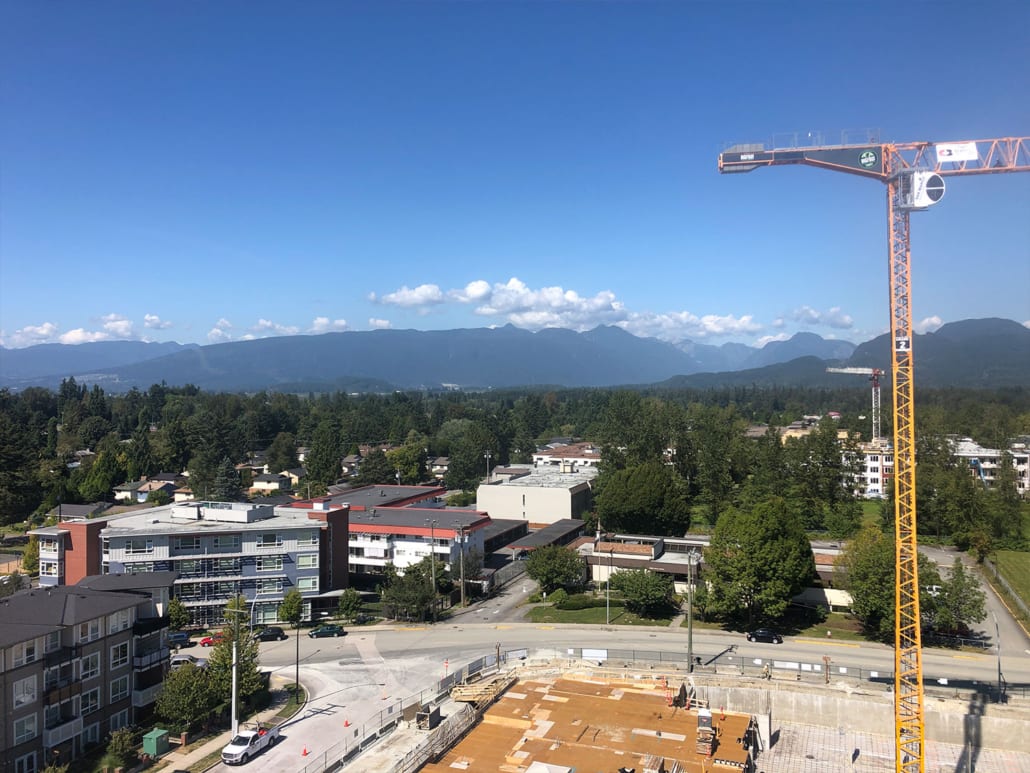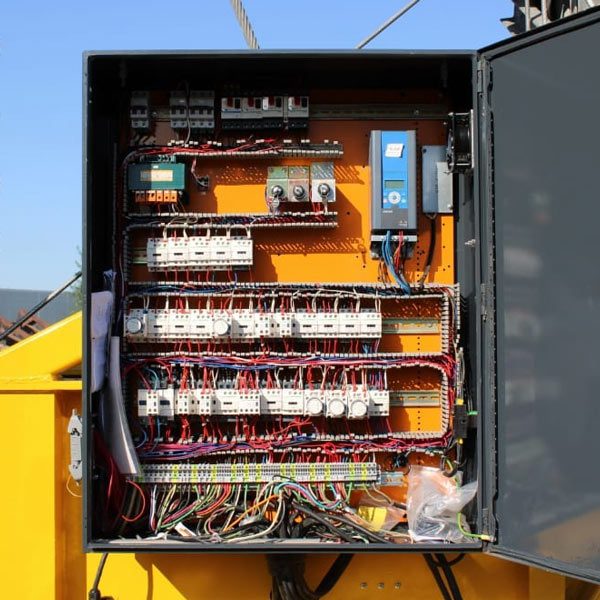Renting a crane can be a game-changer for your construction project, making it much easier to move heavy materials or equipment. But before you rush into hiring one, there are several crane rental tips you need to consider to avoid unnecessary headaches, costs, and delays. Whether you’re planning to rent a tower crane or any other type of crane, this checklist is for you. We’ve compiled 11 essential tips that apply to all crane rentals to help you make informed choices and keep your project on track. From choosing the right type of crane to preparing for unforeseen circumstances, these tips will guide you through the crane rental process smoothly. So, before your next big lift, let’s dive into what you need to know to guarantee success.
1. Know the Type of Crane You Need

There’s no one-size-fits-all when it comes to cranes. Different types of cranes are designed for various tasks. For construction projects, tower cranes are commonly used due to their height and ability to lift heavy loads. However, other cranes such as boom trucks, overhead cranes, and mobile cranes might be more suitable depending on your specific needs. Understanding what each type or crane offers will help you make an informed decision. If you’re building a new residential building, commercial or industrial building, and you are unsure which crane to choose, our team at Bigfoot Crane Company is here to assist. We have a diverse fleet of tower cranes to suit every type of project’s needs.
2. Understand the Crane’s Lifting Capacity
A critical factor to consider is the crane’s lifting capacity. Each crane is built to handle a specific range of weight. Before renting, you need to know the weight of the heaviest load you’ll be lifting. Renting a crane with insufficient lifting capacity could halt your project and pose safety risks. Always choose a crane that can handle more than your heaviest load to account for any unforeseen changes.
3. Assess Site Accessibility
Assessing site accessibility is crucial for any crane rental, as different locations come with their own challenges. Whether you’re working on a new tower in a city center, an urban construction site, an industrial or commercial location, or even an off-grid area, factors like terrain and accessibility will influence the type of crane you need. If your project requires a tower crane, consider the space around the construction site—luffing cranes, for example, have a smaller slew radius and can operate in crowded areas because their jibs can be raised and lowered. Traditional tower cranes have a fixed jib and are better suited for open spaces. If a tower crane isn’t necessary, think about how close the crane can get to the lift area and any potential obstructions. You might need to secure permits to temporarily close roads or footpaths, and conducting a thorough site survey beforehand can help you address these issues and choose the right crane.
4. Consider Height and Reach
In addition to lifting capacity, the crane’s height and reach are essential considerations. A crane must be able to reach the required height and cover the necessary distance without any problems. Before renting, evaluate how high and how far the crane will need to reach. For high-rise buildings, tower cranes are typically the go-to option, but for projects that require horizontal reach, other cranes might be more suitable.

5. Check the Rental Company’s Insurance and Safety Record
Safety should be a top priority when renting a crane. Before signing any rental agreement, make sure the company is adequately insured. This insurance protects you from liabilities in case of accidents or damages during the rental period. Additionally, inquire about the company’s safety record. A reputable company should have certified operators and a history of safe operations. At Bigfoot Crane Company, safety is our number one concern, and we take pride in ensuring that our cranes are meticulously maintained and worked on by highly trained professionals.
6. Understand Licensing and Insurance Requirements
Depending on the type of crane and location, there might be specific licensing and insurance requirements. These regulations can vary, so it’s crucial to verify what’s needed before proceeding. Ensure that both the crane and its operators meet all local and provincial requirements. This step is vital to avoid legal complications and ensure the safe operation of the crane.
7. Clarify the Pricing and Billing Structure
Understanding the pricing and billing structure of the crane rental service can prevent any surprise costs. Inquire about the minimum rental period, any setup or delivery fees, and potential extra charges. Make sure you get a clear breakdown of the costs and ask questions if anything is unclear. Being upfront about your budget and project duration can help the rental company provide the best options for you.
8. Plan for Setup and Take-down
Cranes aren’t plug-and-play devices. Their setup and take-down can be time-consuming and require careful planning. Having a detailed plan in place will make these processes smoother and reduce downtime. Coordinate with the crane rental company to understand what’s involved and prepare your site accordingly. This preparation includes ensuring adequate space for crane assembly and disassembly and having the necessary tools and personnel on hand.
9. Have a Backup Plan
Things don’t always go as planned, especially when dealing with heavy machinery. If you’re renting mobile cranes for shorter periods of time or using other types of cranes, it’s wise to have a backup plan in place in case the crane becomes inoperable or unexpected issues arise. Know who to contact and what steps to take if the crane breaks down or if weather conditions make operations unsafe. Having contingency measures ready can minimize disruptions to your project and help ensure that everything stays on schedule.
10. Get Everything in Writing
Contracts are essential when renting a crane. Make sure all terms, conditions, and agreements are documented in writing. This documentation includes the rental agreement, insurance coverage, pricing details, and any specific instructions for using the crane. Having everything in writing protects both you and the rental company and provides a clear reference point if any disputes arise.
11. Be Prepared for Weather and Unforeseen Circumstances
Mother Nature can be unpredictable, and weather conditions can impact crane operations. Wind, rain, or snow might halt work, so it’s crucial to monitor the weather forecast and be prepared to pause operations if necessary. Additionally, plan for other unforeseen circumstances like equipment malfunctions or delays in delivery. By anticipating potential setbacks, you can adjust your schedule accordingly and avoid costly downtime.
Final Thoughts
Renting a crane is a significant investment that requires careful consideration and planning. By following these 11 tips, you can ensure you select the right crane, understand all requirements, and prepare for any eventualities. This preparation not only promotes a safe working environment but also contributes to the overall success of your project. Bigfoot Crane Company can assist with everything from site planning and surveys to crane erection, maintenance, and take down. Trust our Legendary Service to help you every step of the way. If you have any questions or need further guidance, feel free to contact us for more information.
FAQs
1. What types of cranes are available for rent?
At Bigfoot Crane Company, we offer a variety of cranes, including tower cranes and self-erecting cranes, to suit different project needs.
2. How do I know the lifting capacity required for my project?
Assess the weight of the heaviest load you’ll need to lift and choose a crane with a slightly higher capacity to account for any changes.
3. Are there additional costs beyond the crane rental fee?
Yes, additional costs may include delivery, setup, and potential additional charges. Clarify all costs with the rental company upfront.
4. Do I need a permit for crane operations?
Permit requirements vary by location and project scope. Check with local authorities and the crane rental company to ensure compliance.
5. What should I do if weather conditions change during the crane rental period?
Monitor weather forecasts and have a contingency plan in place. If conditions become unsafe, halt operations until it’s safe to resume.







